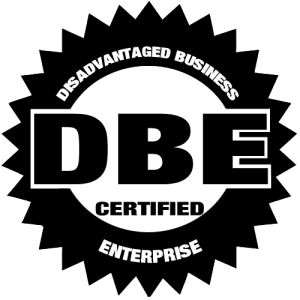Let me introduce you to Responsive Web Design. It’s relatively new on the scene and is so practical that you will love it and embrace it easily. Responsive Web Design is crafted to provide a fluid layout that resizes across multiple viewing devices and screen sizes (from desktop computer monitors to mobile phones). We build and maintain one single website, where previously you needed a separate mobile website.

Answering to the Popularity of Tablets and Mobile
Mashable is calling 2013 the year of Responsive Web Design because the mobile market is growing so fast. The global sale of tablets is expected to exceed 100 million this year. The shift to smartphones and mobile usage is happening at an extraordinary rate of speed. Even though the debate about web or app continues, we think a small business can’t possibly keep up with the diversity of mobile devices on the market today or the amount of app stores to contend with. With Responsive Web Design, you can make sure your website works easily on all devices.
How it Works
Flexible images and fluid grids re-size themselves to fit the screen. Examples are seasonslandscapeinc.com (VIA developed), xpointchurch.org (VIA developed), sony.com, and disney.com. If you view these websites on a desktop browser, try making your browser window smaller. The images and content column will shrink, and then the sidebar will disappear altogether.
The fluid grid concept calls for page element sizing to be in relative units like percentages or EMs, rather than absolute units like pixels or points. Flexible images are also sized in relative units (up to 100 percent). Designers love pixels. Photoshop loves pixels. But a pixel can be one dot on one device and eight dots on another.
So how do you approach Responsive Web Design if everything is pixel-based? You stop using pixel-based layouts and start using percentages or the EM for sizing. You turn everything into relative sizes. We will also include dynamic functionality with JavaScript and HTML5 to give you performance. We can also program device-specific functionality and features where they fit.
The latest research from Google tells us that “90 percent of people move between devices to accomplish a goal, whether that’s on smartphones, PCs, tablets, or TV.” The three most common ways users move between devices are:
- To search again on the second device
- To directly navigate to the destination site
- Via email, that is, to send themselves a link to revisit later.
Reduces Future Maintenance
Responsive Web Design allows future updates to be made in one place at one time. That saves you time and money each time a revision is needed.
The Benefits are Obvious
Build your website once, and it works seamlessly across today’s multi-screen world. Contact us today to discuss how you can move to Responsive Web Design in 2013.
Call us at 219-769-2299, email, or go to viamarketing.net.



 E-Commerce. Glamour shots are a good way to present your products. Show off your products as you would a beautiful human model. Lighting, props and Photoshop touch-ups are so important. When used right, they really accentuate the positives. E-Commerce just can’t be done well without beautiful photography. Educate your audience with videos that demonstrate or explain how to get the most out of your products.
E-Commerce. Glamour shots are a good way to present your products. Show off your products as you would a beautiful human model. Lighting, props and Photoshop touch-ups are so important. When used right, they really accentuate the positives. E-Commerce just can’t be done well without beautiful photography. Educate your audience with videos that demonstrate or explain how to get the most out of your products. Professional head shots. Professional photos are a must for anyone who has a Linked-In page. Take care in choosing just the right shot. Hire a professional for the best look. You are making a statement, so think about what you’re saying with your photo.
Professional head shots. Professional photos are a must for anyone who has a Linked-In page. Take care in choosing just the right shot. Hire a professional for the best look. You are making a statement, so think about what you’re saying with your photo. For example, food giant Kraft has created separate Facebook pages for its various market segments. The Kraft Singles page shows close-ups of mouth-watering burgers and gourmet salads. This site has 83,807 likes. The Kraft Dinner Facebook page clearly appeals to a younger crowd with images of the iconic macaroni noodle engaged in activities that include singing and surfing. Kraft Dinner has accumulated 399,000 likes.
For example, food giant Kraft has created separate Facebook pages for its various market segments. The Kraft Singles page shows close-ups of mouth-watering burgers and gourmet salads. This site has 83,807 likes. The Kraft Dinner Facebook page clearly appeals to a younger crowd with images of the iconic macaroni noodle engaged in activities that include singing and surfing. Kraft Dinner has accumulated 399,000 likes.
 YouTube. This video-sharing website allows you to broadcast yourself.
YouTube. This video-sharing website allows you to broadcast yourself. 
 86 percent of those 75-plus said they had read a book, magazine or newspaper within the 24 hours before being queried) but this doesn’t mean they want to read long blocks of text. Be sure to keep your message short, use bullet lists when appropriate and talk about how the product/service benefits the reader.
86 percent of those 75-plus said they had read a book, magazine or newspaper within the 24 hours before being queried) but this doesn’t mean they want to read long blocks of text. Be sure to keep your message short, use bullet lists when appropriate and talk about how the product/service benefits the reader.


